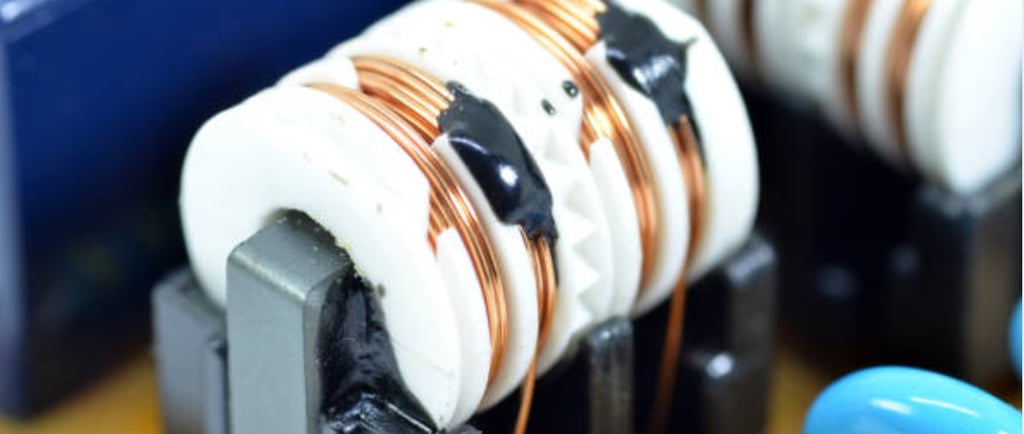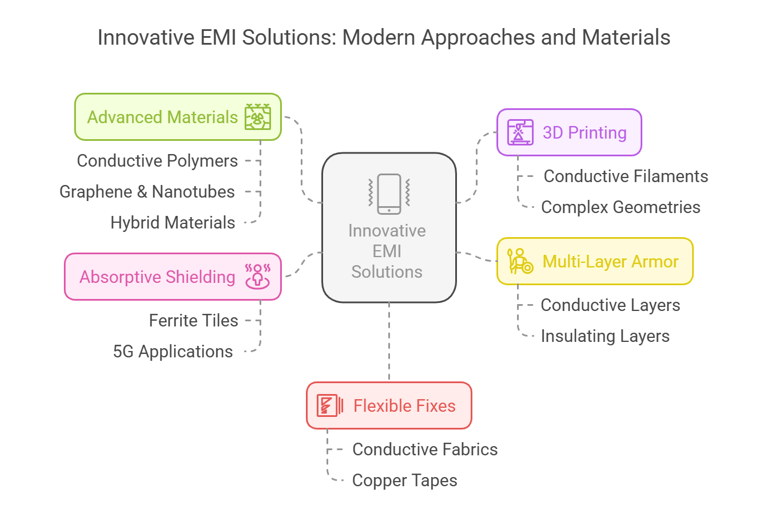Innovative Approaches to EMI Shielding in Electronic Enclosures: Protecting Your Tech in a Noisy World
This article dives into the cutting-edge strategies engineers are using to combat EMI in electronic enclosures. Forget the clunky metal boxes of the past—today’s solutions blend advanced materials, smart design, and a dash of creativity to keep our gadgets running smoothly.
2/8/20254 min read


Imagine this: You’re in a hospital, relying on a heart monitor to track a patient’s vitals. Suddenly, the device flickers and displays erratic readings. Across the room, a technician fires up an MRI machine, and the monitor goes haywire. This isn’t a scene from a sci-fi movie—it’s a real-world example of electromagnetic interference (EMI) at work. In our hyper-connected world, where devices chatter nonstop via Wi-Fi, Bluetooth, and 5G, EMI has become a silent disruptor. From your smartphone to spacecraft, unwanted electromagnetic waves can wreak havoc if left unchecked.
This article dives into the cutting-edge strategies engineers are using to combat EMI in electronic enclosures. Forget the clunky metal boxes of the past—today’s solutions blend advanced materials, smart design, and a dash of creativity to keep our gadgets running smoothly. Let’s explore how innovation is reshaping the battle against electromagnetic noise.
EMI 101: The Invisible Threat to Your Electronics
EMI occurs when stray electromagnetic waves interfere with a device’s operation. Think of it like trying to have a conversation in a crowded room—except here, the “noise” can literally break your electronics. There are two main culprits:
Internal Sources: Components like processors, power supplies, or even clock circuits generate high-frequency noise. Your device can, ironically, disrupt itself.
External Sources: From microwave ovens to cell towers, our environment is swimming in electromagnetic waves. Industrial equipment and radio signals are frequent offenders.
The risks? A misbehaving smart thermostat is annoying, but in critical fields like healthcare or aerospace, EMI can be catastrophic. Imagine an insulin pump glitching due to a nearby radio tower or an aircraft’s navigation system failing mid-flight. Beyond safety, non-compliance with standards like FCC or CE can sink a product before it hits the market.
Shielding Basics: How to Silence the Noise
Traditional EMI shielding works like a digital fortress. Conductive materials (metals like aluminum or copper) form a barrier that either reflects or absorbs electromagnetic waves. The effectiveness hinges on three factors:
Material Conductivity: Better conductors = better shielding.
Seamless Design: Even a tiny gap can let EMI sneak in—like water through a cracked dam.
Shielding Effectiveness (SE): Measured in decibels (dB), SE quantifies how well a material blocks EMI. For example, 60 dB means 99.9999% of interference is blocked.
But let’s face it: Traditional metal enclosures are heavy, expensive, and inflexible. Enter the innovators.
Beyond Metal Boxes: The New Wave of EMI Solutions
1. Advanced Materials: Lighter, Stronger, Smarter
Conductive Polymers: These plastics infused with carbon or metallic particles offer shielding rivaling metals at half the weight. Perfect for wearables or drones where every gram counts.
Graphene & Nanotubes: A single layer of graphene conducts electricity better than copper. Paired with carbon nanotubes, these nanomaterials create ultra-thin, flexible shields ideal for foldable phones or aerospace tech.
Hybrid Materials: Mixing metals with plastics balances cost and performance. For instance, a steel-coated polymer might shield a smart thermostat affordably.
2. 3D Printing: Shields Built Layer by Layer
Why mold or machine enclosures when you can print them? Conductive filaments (e.g., PLA mixed with copper) let engineers prototype enclosures with built-in shielding. Complex geometries? No problem. One aerospace startup 3D-printed a satellite component with integrated shielding, slashing production time by 40%.
3. Multi-Layer Armor
Inspired by medieval armor, multi-layer shielding sandwiches conductive and insulating materials. Each layer tackles different frequencies. A router might use aluminum foil for low-frequency waves and a conductive polymer layer for higher frequencies.
4. Absorptive Shielding: Turning Noise into Heat
Instead of bouncing EMI away, absorptive materials (like ferrite tiles) convert it into harmless heat. This approach shines in 5G gear, where high-frequency waves are harder to block.
5. Flexible Fixes for Agile Designs
Conductive fabrics or copper tapes offer temporary shielding during prototyping. One engineer shared how they used conductive Velcro to test a medical device enclosure—iterating designs without costly tooling.
Designing for Success: Avoiding Common Pitfalls
Even the best materials fail without smart design:
Seams & Gaps: Use conductive gaskets or EMI shielding tapes to seal joints. Laser welding can create near-seamless enclosures.
Ventilation: Honeycomb metal vents or fine mesh screens allow airflow while blocking EMI—like a screen door that keeps out mosquitoes.
Grounding: A poorly grounded enclosure is like a lightning rod without a cable. Ensure a low-resistance path to earth.
Testing: Compliance isn’t optional. Anechoic chambers (rooms designed to absorb reflections) simulate real-world EMI chaos.
Real-World Wins: EMI Shielding in Action
Medical Marvels: MRI machines generate intense EMI. Shielding enclosures with multi-layer graphene coatings protect adjacent devices without adding bulk.
Aerospace Agility: SpaceX’s Starlink satellites use conductive polymer composites to shed weight while surviving cosmic radiation.
IoT Revolution: A smart home hub might combine 3D-printed enclosures and absorptive shielding to coexist with your Wi-Fi router.
Why Go It Alone? Partner with Pros
Designing EMI-proof enclosures is part art, part science. Partnering with experts like Peakingtech offers:
Material Mastery: Access to graphene, conductive inks, and custom hybrids.
Design Savvy: Balancing aesthetics, weight, and shielding in a single package.
Speed to Market: Rapid prototyping and compliance testing under one roof.
Conclusion: Embrace the Shield
EMI shielding isn’t just about compliance—it’s about building trust. Whether it’s a pacemaker or a smart speaker, users expect flawless performance. By leveraging advanced materials, clever design, and flexible solutions, engineers are turning EMI challenges into opportunities.
Ready to silence the noise? Contact Peakingtech to craft enclosures that protect, perform, and impress. Got a tricky EMI problem? Share it below—we love a good challenge!


